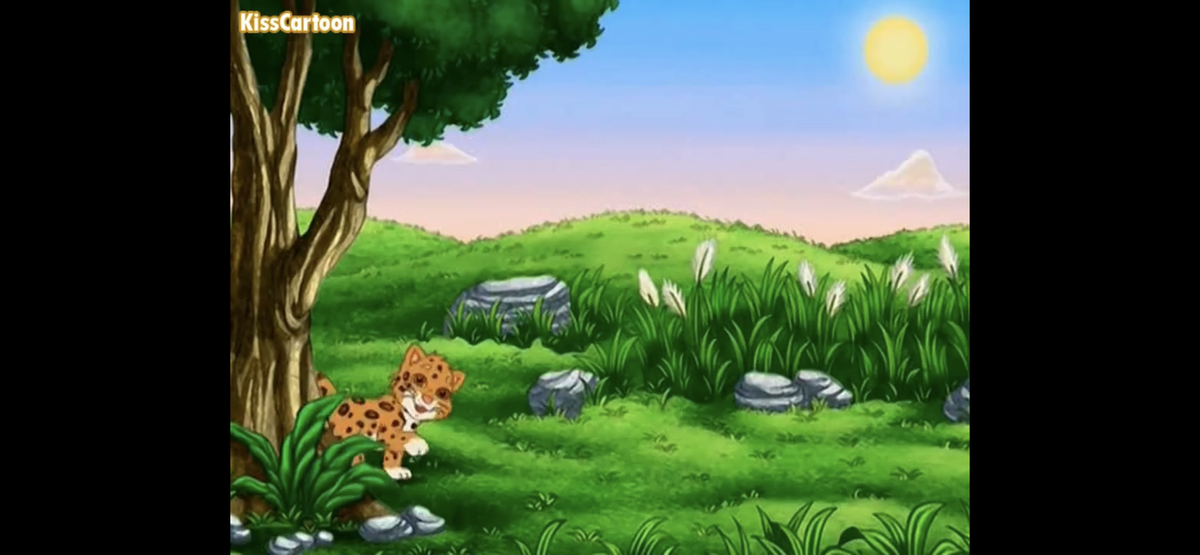Remember the joyful tune of “Go Diego Go!”? The animated series, with its vibrant colors and adventurous spirit, took audiences on journeys through the Amazon rainforest. And among the many captivating creatures Diego encountered, there was one particularly peculiar and charming bird: Willie the Whistling Duck. This playful duck, with its distinctive whistling call, became a favorite among young viewers, sparking curiosity about this remarkable species.

Image: www.imdb.com
While the cartoon character may have been fictional, the Whistling Duck itself, scientifically known as Dendrocygna autumnalis, is very real. Its fascinating characteristics and unique adaptations, however, are no less captivating than the animated version. This article will delve into the world of the Whistling Duck, exploring its habitat, behavior, and the role it plays in the delicate ecosystem of the Amazon.
A Whistling Companion in the Amazon
A Glimpse into the Whistling Duck’s World
The Whistling Duck, despite its name, doesn’t live solely in the Amazon. While they are prevalent throughout South America, they are also found in Central America, Mexico, and even parts of the United States. Preferring warm climates, these ducks often reside near bodies of water like wetlands, lakes, and slow-moving rivers. They are particularly fond of areas with dense vegetation, offering shelter and ample feeding grounds.
These birds stand out with their distinctive features, including a long, slender neck, a reddish-brown plumage with streaks of dark brown, and a prominent bill that is black with a yellow tip. The Whistling Duck’s name stems from its distinctive vocalization, a melodious whistle that resonates through the air and helps them communicate. The whistling sound is particularly prominent during the mating season, creating a symphony of calls throughout their habitat.
More than Just a Pretty Whistle
The Whistling Duck’s life revolves around a carefully balanced rhythm of feeding, socializing, and breeding. Their diet primarily consists of aquatic plants, seeds, insects, and small creatures, making them opportunistic feeders. They are often seen foraging in groups, congregating in large flocks that can number hundreds of individuals. This communal behavior provides safety in numbers, increasing their chances of survival against predators.
During breeding season, the Whistling Duck engages in a fascinating courtship ritual. They will often perform elaborate displays, involving head movements, bill clapping, and vocalizations. The female then builds a nest in a hollow tree, a reed bed, or a dense clump of vegetation, laying a clutch of 5-15 eggs. Both parents share the responsibility of incubating the eggs and raising their young, a testament to their cooperative nature.

Image: dora.fandom.com
A Vital Part of the Ecosystem
The Whistling Duck’s presence in the Amazon ecosystem is not simply a matter of aesthetic appeal. They play a crucial role in maintaining the balance of the environment. Their diet, primarily composed of plant material, helps regulate the growth of vegetation, preventing excessive overgrowth. They also serve as a food source for various predators, contributing to the food chain’s stability.
Furthermore, their nests serve as a habitat for various insects and small animals, contributing to biodiversity. By providing an essential service in the form of seed dispersal, the Whistling Duck plays a vital role in the regeneration of plant life. Their unique combination of traits and roles makes them an integral component of the Amazon’s complex and fragile web of life.
Protecting Willie and His Kind
The Whistling Duck, like many other animals in the Amazon, is facing threats from habitat loss, pollution, and hunting. Human activity, particularly deforestation, is shrinking their natural habitat. Pollution from agricultural runoff and industrial waste is contaminating their food sources and water, impacting their health and survival.
Hunting for food and sport is another significant pressure on their population, leading to declining numbers. Conservation efforts are underway to protect Whistling Ducks and their habitats, but much more needs to be done. Education and awareness initiatives can raise understanding about the crucial role these birds play in the ecosystem. Reducing pollution and deforestation and promoting sustainable practices can help ensure the Whistling Duck’s survival for generations to come.
Tips for Supporting the Whistling Duck
If you’re captivated by the story of Willie the Whistling Duck and want to contribute to their well-being, here are some simple steps you can take:
- Support sustainable agriculture: Choose products that support eco-friendly practices minimizing pesticide and fertilizer use, which lessen pollution reaching waterways.
- Reduce your carbon footprint: Take actions like using public transportation, recycling, and energy-efficient appliances to help address climate change, which contributes to habitat loss.
- Spread awareness: Share information about Whistling Ducks on social media platforms, informing others and encouraging them to support conservation efforts.
- Donate to conservation organizations: Consider supporting organizations working to protect rainforests and their inhabitants.
FAQs About the Whistling Duck
Q: Are Whistling Ducks actually ducks?
A: Yes, they are a species of duck, but they belong to the Dendrocygna genus, which differentiates them from the typical mallard or other waterfowl found in colder climates.
Q: Why do they whistle?
A: The whistling sound comes from the unique shape of their windpipe and trachea. They use their characteristic whistle for communication, especially during mating season to attract mates.
Q: Can I keep a Whistling Duck as a pet?
A: While charming, it’s not recommended to keep them as pets. They have specific needs for habitat and diet that are difficult to meet in a domestic setting. Their natural habitat in the Amazon is where they thrive best.
Go Diego Go Willie The Whistling Duck
Q: How can I help them?
A: Supporting conservation efforts, reducing pollution, and raising awareness about the importance of rainforest conservation are all important ways to contribute to the well-being of the Whistling Duck and its ecosystem.
Are you inspired to learn more about the Whistling Duck and their vital role in the Amazon? Share your thoughts in the comments below!






